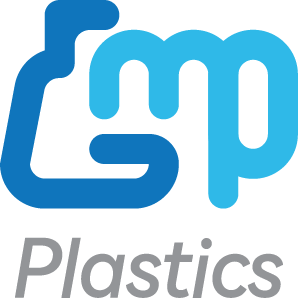Neural differentiation—the process of directing stem cells to develop into neurons and glial cells—is a cornerstone of neuroscience research and regenerative medicine. It enables scientists to model neurological diseases, screen potential therapeutics, and explore cell-based treatments for various neurological conditions. Selecting an appropriate neural differentiation protocol is crucial, as it influences the efficiency, reproducibility, and applicability of the derived neural cells. This article delves into the various neural differentiation protocols, their methodologies, advantages, limitations, and considerations for choosing the most suitable approach.
Understanding Neural Differentiation
Neural differentiation involves guiding pluripotent stem cells (PSCs), such as embryonic stem cells (ESCs) and induced pluripotent stem cells (iPSCs), to become specialized neural cells. This process is pivotal for creating in vitro models of the nervous system, which are instrumental in studying neurodevelopmental processes, disease mechanisms, and potential therapeutic interventions.
Sources of Pluripotent Stem Cells
-
Embryonic Stem Cells (ESCs): Derived from the inner cell mass of blastocysts, ESCs can self-renew indefinitely and have the potential to differentiate into any cell type, including neurons and glial cells.
-
Induced Pluripotent Stem Cells (iPSCs): Generated by reprogramming adult somatic cells through the overexpression of pluripotency-associated genes, iPSCs share similar properties with ESCs. They offer a patient-specific approach, which is advantageous for personalized medicine and modeling genetic neurological disorders.
Neural Differentiation Protocols
Several protocols have been developed to induce neural differentiation from PSCs. The choice of protocol depends on factors such as the desired neural cell type, efficiency, scalability, and reproducibility.
-
Monolayer Differentiation:
-
Methodology: PSCs are cultured in a two-dimensional environment and exposed to specific signaling molecules that promote neural lineage commitment.
-
Advantages: Simplifies the differentiation process and is relatively easy to implement.
-
Limitations: May yield a heterogeneous population of neural cells and lacks the three-dimensional architecture of native neural tissue.
-
-
Embryoid Body (EB) Formation:
-
Methodology: PSCs are aggregated into three-dimensional clusters known as embryoid bodies, which are then induced to differentiate into neural cells.
-
Advantages: Mimics early embryonic development, promoting the formation of diverse neural cell types.
-
Limitations: Differentiation can be variable, and controlling the specific cell types produced is challenging.
-
-
Neural Rosette Formation:
-
Methodology: PSCs are directed to form neural rosettes—radially organized structures resembling the neural tube—indicative of neural progenitor cells.
-
Advantages: Enables the isolation of neural progenitors that can further differentiate into various neural subtypes.
-
Limitations: Requires meticulous manual selection, making it labor-intensive and potentially less scalable.
-
-
Direct Programming:
-
Methodology: Somatic cells are directly converted into neural cells by introducing specific transcription factors, bypassing the pluripotent state.
-
Advantages: Accelerates the generation of neural cells and reduces the risk of tumorigenicity associated with PSCs.
-
Limitations: Efficiency can be low, and the resulting cells may have limited proliferation capacity.
-
Factors Influencing Protocol Selection
Choosing the appropriate neural differentiation protocol requires careful consideration of several factors:
-
Desired Cell Type:
-
Different protocols may favor the generation of specific neural subtypes. For instance, dopaminergic neurons are often derived using protocols that include specific growth factors like Sonic Hedgehog (SHH) and Fibroblast Growth Factor 8 (FGF8).
-
-
Efficiency and Yield:
-
Protocols vary in their efficiency and the number of viable neural cells produced. High-yield protocols are preferred for applications requiring large quantities of cells, such as drug screening.
-
-
Purity and Specificity:
-
The heterogeneity of the resulting cell population is a critical factor. Protocols that produce a pure population of the desired neural subtype are essential for consistent experimental outcomes.
-
-
Scalability:
-
For clinical applications, protocols must be scalable to produce sufficient cells under Good Manufacturing Practice (GMP) conditions.
-
-
Reproducibility:
-
Consistency across experiments and between different laboratories is vital. Standardized protocols with defined media and conditions enhance reproducibility.
-
-
Time Considerations:
-
The duration of differentiation varies among protocols. Time-efficient protocols are advantageous for high-throughput applications.PMC
-
Applications of Neural Differentiation
The ability to generate neural cells in vitro has revolutionized several areas of neuroscience and medicine:
-
Disease Modeling:
-
Patient-derived iPSCs can be differentiated into neural cells to model neurological disorders, providing insights into disease mechanisms and progression.
-
-
Drug Discovery and Toxicology:
-
In vitro neural cells serve as platforms for screening potential therapeutics and assessing neurotoxicity, reducing reliance on animal models.
-
-
Regenerative Medicine:
-
Differentiated neural cells hold promise for cell replacement therapies in conditions such as Parkinson's disease, spinal cord injuries, and stroke.
-
-
Personalized Medicine:
-
Patient-specific neural cells enable the testing of individualized treatment strategies, enhancing therapeutic efficacy.
-
Challenges and Future Directions
Despite significant advancements, challenges remain in neural differentiation:
-
Maturation: Achieving fully mature and functional neural cells in vitro is complex and requires prolonged culture periods.
-
Functional Integration: For regenerative therapies, ensuring that transplanted cells integrate appropriately




